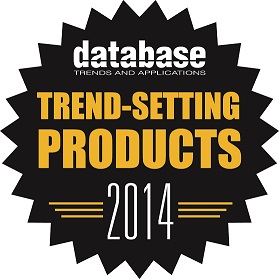
The data-driven demands on organizations have never been greater. Today, organizations need to manage more data, flowing faster, and with greater variety from more sources than ever before. Concurrently, they are experiencing a pressing need to extract insight from that information quickly to support real-time decision making, while maintaining data governance standards and around-the-clock availability. It’s a lot to keep up with.
The acknowledgement of the extent to which data is powering companies today has spurred an embrace of the term “datification”—the notion that just as companies became wholly reliant on access to electrical power in the last century with widespread electrification, companies are now similarly dependent on data to run their businesses.
In fact, the development and use of new technologies and data management methods is much more than a theoretical concept being explored in conferences, white papers, and webcasts; it is a real part of everyday business, according to a recent Independent Oracle Users Group (IOUG) survey of 160 data managers and professionals, sponsored by Oracle Corp., and conducted by Unisphere Research, a division of Information Today, Inc.
As the growth of data accelerates—both in terms of number of databases and in data volume—DBAs need to understand how it will impact their systems, the study finds. Moreover, the report points out, as deployment of private, hybrid and public clouds increases, the challenge of managing data in virtualized environments is accelerating as well. (“From Database Clouds to Big Data: 2013 IOUG Survey on Database Manageability”)
Two of the most pressing concerns that organizations face today are the need to provide analytic access to newer data types such as machine generated data, documents and graphics, and the need to control the cost of information management for their growing data stores, according to another IOUG-Unisphere study, “Achieving Enterprise Data Performance—2013 Database Growth Survey.” The study, also sponsored by Oracle, found that for 31% of the 322 data managers and professionals in the respondent pool, the greatest challenge for the 12 months ahead was the ability to analyze “more and different kinds of data.” Another 30% said it was the ability to decrease information infrastructure costs.
While many organizations believe that their existing technology is capable of allowing them to benefit from big data, current solutions in place also may be in need of an overhaul, according to an SAP-sponsored survey conducted by Unisphere. The “2013 Big Data Opportunities Survey,” found that more than a third of the 304 respondents, 36%, need faster querying of data while another 43% want to get faster access to larger datasets.
To help organizations manage and extract insight from today’s data-propelled environments, new products are coming to the fore. Capabilities are being added to leading relational and MultiValue data management systems. In addition, cutting-edge technologies and techniques are emerging in the form of NoSQL and NewSQL data management systems, SaaS and cloud solutions, real-time BI, data visualization, and more.
On the following web pages is DBTA’s list of Trend-Setting Products for 2014. These products, platforms, and services range from widely accepted offerings that continue to evolve to meet the needs of their loyal following to breakthrough technologies that have just released and are in the early stages of adoption. However, they all seek to arm organizations with tools to address rapidly changing market requirements and represent a commitment to innovation. Read on...

